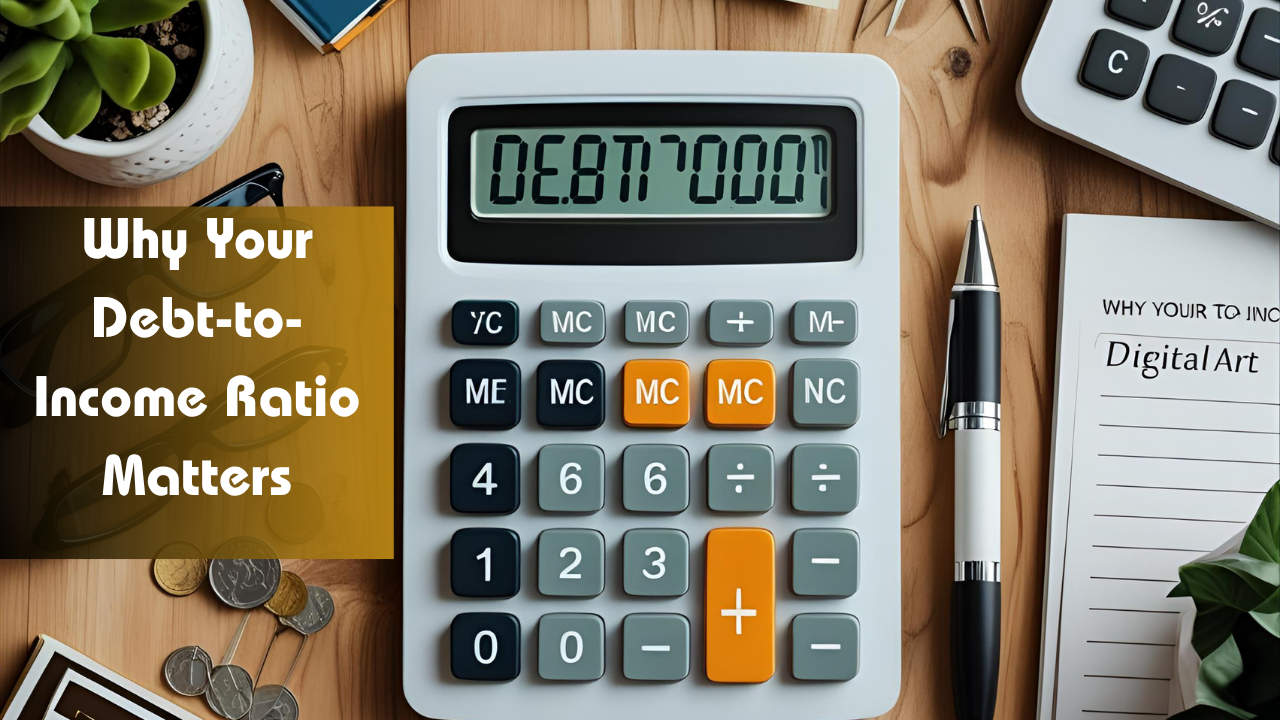When applying for a loan, mortgage, or credit card, one of the most important factors lenders evaluate is your debt-to-income (DTI) ratio. But this metric isn’t just crucial for banks—it’s also an essential indicator of your own financial health and stability.
Understanding your DTI can help you manage your money better, make smarter borrowing decisions, and increase your chances of loan approval. This article explains what the debt-to-income ratio is, how to calculate it, and why it plays such a significant role in your financial life.
Table of Contents
- What Is a Debt-to-Income Ratio?
- How to Calculate Your DTI
- Why DTI Matters to Lenders
- What Is a Good Debt-to-Income Ratio?
- How to Improve Your DTI
- Final Thoughts
What Is a Debt-to-Income Ratio?
The debt-to-income ratio is the percentage of your monthly income that goes toward paying monthly debt obligations. It compares how much you owe to how much you earn and helps determine whether you’re financially overextended.
This ratio is commonly used in loan underwriting to assess whether a borrower can reasonably afford new debt.
How to Calculate Your DTI
To calculate your DTI, follow this simple formula:
DTI = (Total Monthly Debt Payments ÷ Gross Monthly Income) × 100
Example:
- Monthly debt payments: $1,200
- Gross monthly income: $4,000
- DTI = ($1,200 ÷ $4,000) × 100 = 30%
What Counts as Debt?
- Mortgage or rent payments
- Credit card minimum payments
- Auto loans
- Student loans
- Personal loans
- Alimony or child support (if applicable)
Why DTI Matters to Lenders
Lenders use your DTI ratio to gauge how much risk you pose as a borrower. A high DTI suggests you may have trouble keeping up with future payments, while a low DTI indicates better financial stability.
Lenders consider DTI when you apply for:
- Mortgages
- Auto loans
- Personal loans
- Credit cards
- Debt consolidation plans
A low DTI can lead to:
- Easier loan approvals
- Lower interest rates
- Higher borrowing limits
On the other hand, a high DTI could mean:
- Rejected applications
- Higher interest rates
- Smaller loan offers
According to Consumer Financial Protection Bureau (CFPB), lenders typically prefer a DTI below 43%, with the best rates going to those under 36%.
What Is a Good Debt-to-Income Ratio?
Here’s a general guide to evaluating your DTI:
| DTI Range | Meaning |
|---|---|
| Under 20% | Excellent – Strong financial footing |
| 20% – 35% | Good – Acceptable to most lenders |
| 36% – 43% | Risky – May limit your borrowing options |
| Over 43% | High Risk – Likely to face loan denials |
Mortgage lenders, for instance, often require DTI below 36%, though some programs allow up to 43% or higher with compensating factors.
How to Improve Your DTI
If your debt-to-income ratio is too high, here are a few steps to lower it:
1. Pay Off Existing Debts
Start with high-interest credit cards or personal loans. Use the debt snowball or debt avalanche method to prioritize payments.
2. Increase Your Income
Take on freelance work, a side hustle, or negotiate a raise. Any extra income can improve your DTI ratio quickly.
3. Avoid Taking on New Debt
Delay large purchases and avoid new loans or credit lines until your DTI improves.
4. Refinance Loans
If eligible, refinancing at lower interest rates can reduce your monthly payments and improve your ratio.
5. Create a Realistic Budget
Use tools like Google Sheets, Excel, or apps like YNAB to monitor your expenses and free up cash flow.
Final Thoughts
Your debt-to-income ratio is more than just a loan requirement—it’s a reflection of how well you’re managing your financial responsibilities. Whether you’re applying for a mortgage, planning to consolidate debt, or simply want to strengthen your financial profile, understanding and improving your DTI can open doors and reduce financial stress.
Take time to evaluate your ratio today and build a clear strategy for improving it over time.

